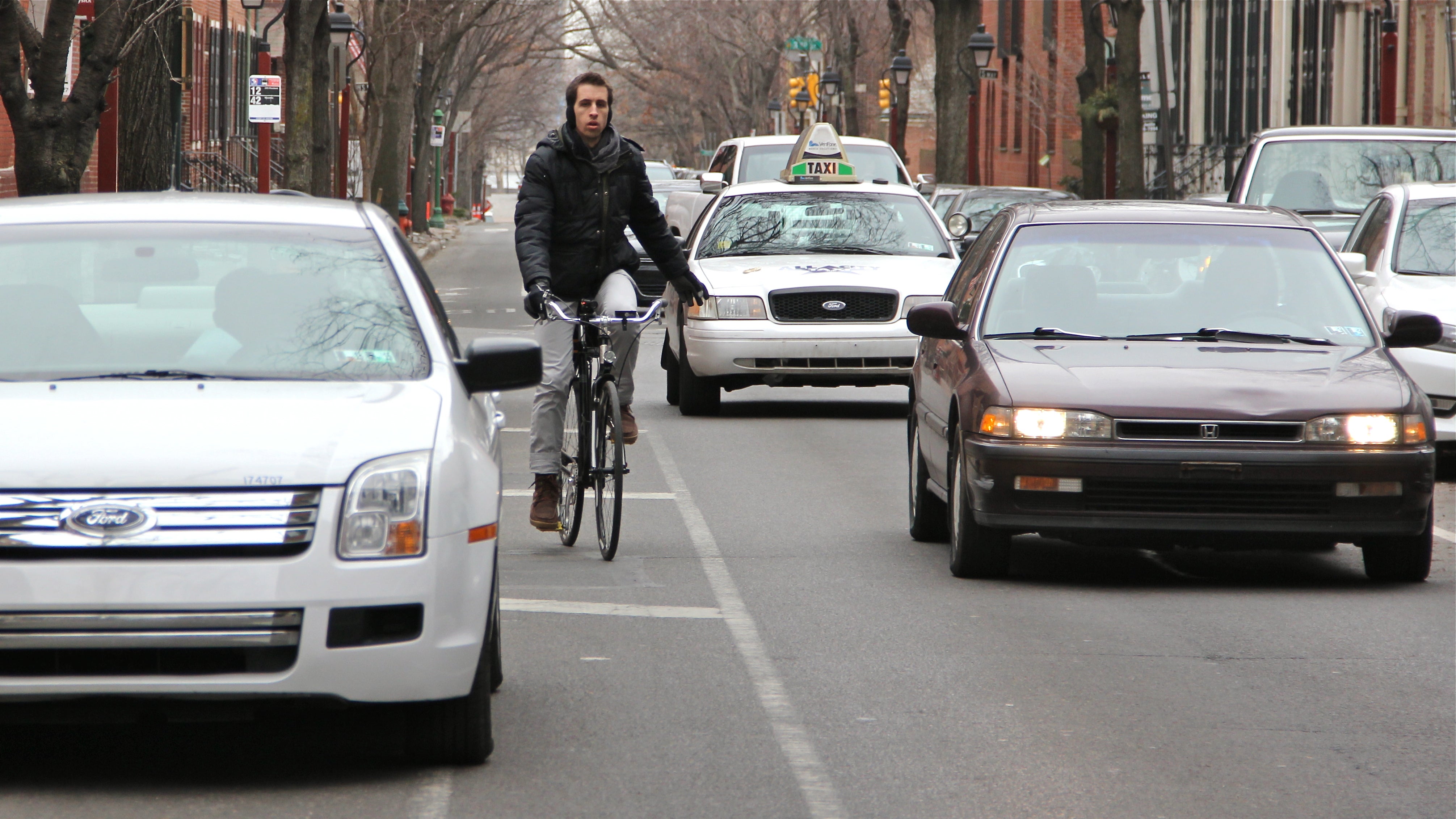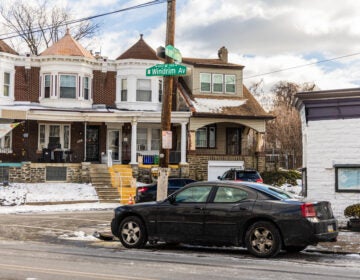Cyclists violate traffic law no more than drivers, new data shows

A new study from the Florida Department of Transportation (FDOT) seems to further confirm a sinking suspicion many Philadelphians have: Everyone on the road is a law-breaking jerk.
The FDOT study [PDF] is the latest suggesting that motorists and cyclists both violate traffic laws at about the same rate: cyclists comply 88 percent of the time and drivers 85 percent of the time. Those numbers suggest that the average driver and regular cyclist alike break a traffic law once or twice a week, assuming a consistent daily commute.
That finding undermines a narrative common among many drivers that cyclists are serial scofflaws.
FDOT researchers recruited 100 cyclists in the Tampa Bay area and placed sensors, GPS units, and cameras to record their habits over 2,000 hours of riding. After reviewing thousands of hours of footage of illegal turns and rolling stops, the study’s authors concluded that their findings support increased traffic safety education and enforcement efforts for everyone on the road, as well as some road improvements designed to better separate bikes and cars. The recommended design interventions include the creation of bike lanes protected by separation barriers — particularly around intersections where a cyclist is more likely to wind up in a turning car’s blind spot. Such a “right hook” turn caused the death of a 24-year old Philadelphia cyclist last month.
Traffic safety advocates like the Bicycle Coalition of Greater Philadelphia have long called for changes in street design, such as protected bike lanes, as part of a broader “Vision Zero” strategy to reduce fatal crashes. While those efforts have resulted in some new bicycle infrastructure in Philadelphia, the activists feel that resistance from motorists and neighborhood residents opposed to slowing down or giving up parking has slowed meaningful progress.
Randy LoBasso, communications manager for the Bike Coalition, welcomes the FDOT research but doesn’t think it will change many attitudes in Philly.
“Everyone who uses the road in Philly already knows that virtually all drivers roll through stop signs, speed, and often fail to yield,” said LoBasso, who noted that cyclists also break the law.
He suspects that cultural norms, not stats, drive the cyclists vs. motorist debate. “There is a perception that cyclists are breaking the law at a much worse rate than people driving cars,” said LoBasso. “But I think that breaking the law as a motorist is just sort of built into being a motorist. It’s ‘baked into the cake’ as some people say because it’s expected that you’re going to drive over the speed limit.”
That said, LoBasso admitted that the study had its flaws — because the riders knew they were on camera, they likely rode a little bit better than they usually would have.
What LoBasso described as an unavoidable, small bias in the data, Thomas McCarey of the National Motorists Association called a fatal flaw. “There was no control group,” McCarey wrote in an email to PlanPhilly. “I bet if you put cameras… in cars, you would get the reverse results.”
McCarey accused FDOT of designing a study to arrive at a predetermined conclusion blaming drivers and street design for dangerous traffic conditions, describing Florida transportation officials and the Bicycle Coalition as an “anti-auto lobby” with the goal of creating “a carless city, period.”
“For over 100 years bikes and cars have co-existed successfully,” McCarey wrote, “but now the snowflakes MUST be protected! from all those awful cars!!”
LoBasso pointed out that the FDOT study wasn’t the first study to suggest that cyclists and drivers violate traffic laws at similar rates: Both groups in a University of Colorado survey said they break the law just under ten percent of the time.
“So, everyone is a so-called criminal when it comes to this stuff,” LoBasso said. “But, obviously when people in motor vehicles break the law they are more likely to kill someone.”
In 2017, all of the 96 traffic fatalities that occurred in Philadelphia involved cars, according to data from the Philadelphia Police Department obtained by the Bicycle Coalition.
In addition to its top-line findings, the FDOT research yielded a few unexpected results that might suggest that observation effects and self-reporting biases. The study showed that male cyclists followed the law more than women, which runs counter to most research showing men as less risk-averse — and thus more willing to engage in norm-breaking behavior. Not only did the women in the FDOT study self-report themselves more as a “high-risk” cyclist (26.7 percent vs. 20.0 percent) and a “high-distraction” rider (33.3 percent vs. 15.0 percent), but the cameras and sensors found the women riders in the study taking more risks.
Other findings reflected earlier research: Older riders were less likely to break laws or take risks than younger riders; compliance improved at night compared to during the day, and cyclists that took street bike safety courses rode safer than those who had not.
WHYY is your source for fact-based, in-depth journalism and information. As a nonprofit organization, we rely on financial support from readers like you. Please give today.






